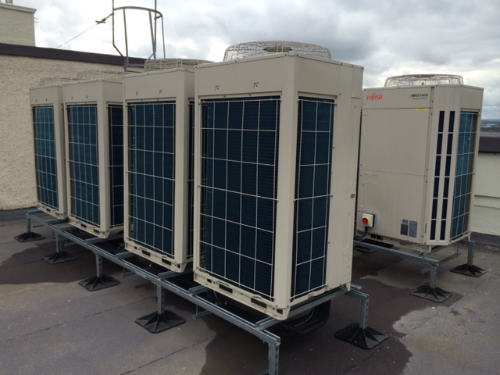With the changing times, there has been a lot of change in terms of technology. Furthermore, It is essential to adopt the latest technologies for optimum benefits. In the same manner, opting for VRF Systems (Variable Refrigerant Flow) will provide you with long-term benefits such as energy reduction and lower maintenance costs. Besides, it has the potential of providing different amounts of cooling to different parts of your home or workplace according to the capacity and needs.
We have already stated that VRF systems are easy and affordable to maintain. For the same, here we bring you a blog on how to maintain your VRF systems. Not only that, but we also list out the points for making the best possible use of your VRF system.
Things to consider for boosting your VRF System
VRF Refrigerant Piping Design
Basically, the VRF systems work in extreme temperatures. Therefore, you need to assign some space for contraction and thermal expansion in the copper branch piping. Furthermore, you can also choose an expansion loop or any other kind of thermal expansion tool.
Avoiding this thermal expansion will intensify the chances of leakage in VRF Y joint, branches and equipment connections.
Supplementary heat
The heating capacity of a VRF system lessens with the decrease in the air temperature outside. One should always keep a check on the loads and size of the system. Besides, you can also opt for an auxiliary heat source.
Choose Defrost mode
When in heating mode, VRF systems tend to increase the frost build-up. To avoid this build-up, switch to defrost mode by shifting to cooling. Here, the accumulated frost will melt by the vapour released from defrost mode. While opting for defrost mode, you will not be able to get heat from the system.
Insulation Capabilities
Generally, VRF refrigerant piping working temperatures can reach up to 190 F. It means there is a need for insulation that can endure at least 248 F. The decision regarding the types and thickness of insulation is based on the refrigerant pipe sizes and temperatures. Generally, EPDM (a type of synthetic rubber) is quite popular when it comes to insulation. The reason behind this is considered to be its closed-cell continuous vapour barrier.
Opting for Outdoor Units
Each manufacturer ensures to provide essential controls for optimizing the efficiency of your VRF system without any additional programming.
Tips for Maintaining VRF Systems
Installation Zone
Before the installation of VRF systems, always look out for the place where it can fit the best. There are instances where people fit the VRF systems in the same space as of their old HVAC system. It is not an ideal way to choose as both systems are entirely different. VRF Systems are smaller in size when compared to the older systems. If you pay attention to this small point, it can make a huge difference. VRF systems It has been seen that systems situated indoors don’t need much maintenance whereas the systems situated outside need more maintenance.
The reason behind is their utmost exposure to heat, dust, and cold every single day. It is advised to opt for stands to increase the life of your VRF system. Most importantly, avoid placing them near water, dirt or mud as it could reduce their efficacy and also damage them.
Enhance Controls
Further, you should think about enhancing the controls. Always try to amalgamate the controls rather than separating them. If you wish to see your VRF systems working efficiently, remove the obstacles and lessen the distance between programming, controls, and unit housing.
Examine the Insulation Level
You should consider checking the insulation level of your VRF system or get a technician to do the same. There are times when rising temperatures lead to a lot of residual heat. The higher temperature inside will make people feel uneasy. Sometime it may also become a reason for illness.
Wrapping Up
Opting for VRF systems is one of the best decisions ever. It will provide you with maximum benefits at a lower cost. There are several ways to get the best out of your VRF systems. We hope this blog on tips for boosting and maintaining VRF Systems will give you a better working system.
Do you think we have missed any point? Feel free to share in the comments. Also, feel free to share your feedback and suggestions in the comments.


